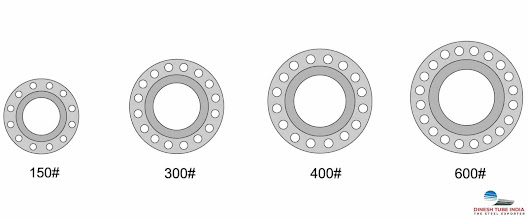Why buttweld fittings are important and what are their uses
The most common types of pipe
fittings are threaded fittings, socket welded fittings, and buttweld fittings,
of which the threaded fittings are the most popular. There are several
advantages to both of these types of fittings. However, this blog will focus on
the advantages of buttweld fittings and their application in particular.
It is necessary to use pipe fittings in
pipelines in order to allow the following to take place:
·
Changing the direction in which liquid
flows through pipes.
·
Liquid flows in two directions through the
branching of the pipe.
·
The diameter of the pipe is reduced.
·
Auxiliary equipment is attached.
·
The pipeline has reached its end.
Special Piping Materials offers buttweld
fittings that are designed and constructed in accordance with the ASME
standards for buttweld fittings. Many different materials are available for the
manufacture of these fasteners, for example, super duplex, nickel alloys,
stainless steels, duplexes, 6% molybdenum alloys, as well as 5% molybdenum
alloys.
Buttweld
fittings
Manufacturing:
Hot or cold forming is the process of
manufacturing a buttweld fitting by bending and moulding it into the desired
shape. Heat treatment is also used to remove any residual stresses and to
achieve specific mechanical properties, as well as to remove residual stresses.
Buttweld fittings have to have the ends of
their end caps bevelled, and the exact shape of the bevel depends largely on
the wall thickness of the pipe to which the fitting is being attached. There is
a wide range of exotic materials that can be used for buttweld fittings, such
as super duplex material, nickel alloy material, and even 6% molybdenum
material. There is a good chance that the material of the fitting will be the
same as the pipe system that it will be attached to, in the majority of cases.
There are several types of buttweld fittings
defined in the ASME B16.9 standards, including corrosion-resistant buttweld
fittings that conform to MSS SP43 specifications that are designed to be light-weight.
·
These valuable fittings are
available in many different shapes, dependent on the intended purpose:
·
Pipelines are altered using ‘elbows’.
·
Pipe bore sizes can be reduced or
increased by using ‘reducers’.
·
Multiple ways are available for splitting
the flow in the pipe with ‘Tees’ or ‘Crosses’.
·
When pipelines need to be closed, ‘caps’
are used.
Types of ButtWeld Pipe Fittings
·
Pipe
Elbows – Pipe
elbows allow a change in direction between two lengths of pipe or tube, usually
done with carbon steel elbows with connection ends.
·
Pipe
Bending – Materials
used for pipe bends include carbon steel, alloy steel, stainless steel,
low-temperature steel, and high-performance steel.
·
Pipe
Tees – Our
seamless tube tees and welding tube tees, as well as straight tees and reducing
tees, can be supplied. The inlet and outlet sizes of pipe tees are usually the
same.
·
Pipe
Cross – Fitting
with four openings exactly opposite one another, on the same side. In pipe
fittings, a pipe cross is used. A four-pipe junction requires it. One inlet can
be connected to three outlets, or three inlets can be connected to one outlet.
·
End
Caps – Plastic
End Caps, Stainless Steel End Caps, ASTM, DIN, ANSI, ISO, JIS and ISO
Standards, 1/2 to 56 Inches. Different types of pipe caps are available, such
as carbon steel caps, stainless steel caps, and alloy steel caps.
·
Pipe
Reducer – Pipe
reducers provide flexibility in connecting fractional tubes in a wide variety
of applications by providing a tight connection.
·
Stub
End – A
Stub End is a fitting used to replace welded flanges in applications requiring
rotating backup flanges. Lap Joints and Vanstone Flared Laps are also called
lap joints. Stub End back surfaces are seated against a rotating backup flange.
·
Coupling
Fittings – Coupling
fittings are used for fluid conduits in which each end portion of two tubes to
be connected is provided with a swaged-on adapter that can be used to connect
or disconnect the tubes without disturbing it.
Applications:
Many industries use buttweld
fittings for altering, dividing, and terminating fluid flow. The following
types of processes are used in these facilities: waste treatment, chemical
processing, breweries, petrochemical plants, cryogenic plants, paper
production, gas processing, and even nuclear power plants. It is clear from
this wide variety of applications how robust a buttweld fitting is and how
highly regarded it is.
Read More About This Article
On Our Website For More information: https://thesteelexporter.com/why-buttweld-fittings-are-important-and-what-are-their-uses/
#design #architecture #interiordesign #steel #art #garden #gardendesign #rust #gardening #sculpture #metal #welding




Comments
Post a Comment